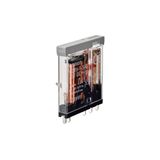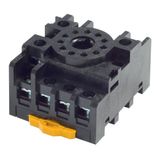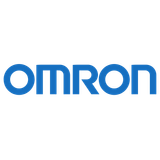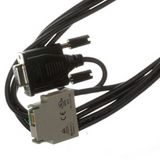Omron Industrial Automation




























































OMRON Automatics & Control – Industrial-Grade Control Systems for Professional Installations
In modern manufacturing, infrastructure and industrial automation projects, reliable machine and process control systems form the backbone of productivity, safety and connectivity. OMRON’s automatics & control portfolio (control systems, PLC modules, automation devices, industrial control) is engineered to support everything from single machine integration to large-scale networked production lines — offering performance, modularity and long-term procurement clarity.
From a procurement and specification viewpoint: key parameters include controller architecture (PLC, PAC, motion controller), I/O module count and type, network compatibility (EtherNet/IP, EtherCAT, DeviceNet), expansion path, environment (panel-mount, machine-embedded) and standards compliance (IEC 61131, IEC 61508, IEC 62443). Choosing OMRON automatics & control solutions helps reduce integration risk, simplify spares inventory and harmonise documentation and service support.
OMRON Control Systems & PLC Modules
OMRON offers highly scalable controller platforms — from compact PLCs to full-machine automation controllers. Their “Machine Automation Controllers” and “Programmable Logic Controllers” categories cover compact systems through to multi-axis motion control and large networked configurations.
Procurement tip: define current I/O requirements, future growth (e.g., networked robots, vision systems), choose the controller family that supports needed network protocols, expansion modules and spare-part continuity.
OMRON Automation Devices & Industrial Control Components
Beyond core controllers, OMRON offers a broad range of automation devices — remote I/O, HMI terminals, industrial PCs, safety controllers, motion drives and components.
These devices integrate with the control system architecture, enabling modular upgrades, diagnostics, connectivity and future-ready automation.
Procurement tip: ensure compatibility with the chosen controller family, confirm network and data-exchange support (e.g., EtherNet/IP or EtherCAT), and standardise spares across modules to reduce SKU proliferation.
oMRON Specification Checklist for Procurement Teams
Before placing a bulk order of OMRON automatics & control equipment, ensure you have specified:
- Controller family & architecture: e.g., NX-series, NJ-series, or compact PLC units.
- I/O module requirement and expansion path: current I/O count + future growth margin.
- Network and communication protocols: supported networks (EtherNet/IP, EtherCAT, DeviceNet, Profinet) and future-proofing.
- Environment and mounting type: panel-mounted vs machine-embedded, ambient conditions (temperature, dust, vibration).
- Standards and certification: compliance with IEC 61131-3 (PLC programming), IEC 62443 (cybersecurity) and relevant machine-safety standards.
- Spare-part and series compatibility: lock part-numbers within one series to simplify inventory, maintenance and future upgrades.
Failing to define any of these can cause mismatched modules, integration issues, extended commissioning or excessive lifecycle cost
OMRON Practical Application Scenarios & Cost Metrics
- In a multi-machine production line upgrade, specifying an OMRON controller family compatible with both current machines and future robots allows reuse of programming libraries and reduces commissioning by up to 30%.
- In a large process-plant retrofit, opting for a controller series with future-ready network support (e.g., EtherNet/IP + EtherCAT) avoids full replacement in 5 years and reduces total cost of ownership.
- In panel-build environments, using OMRON automation devices (remote I/O, HMI, motion drives) from the same family cuts down panel wiring complexity, standardises spare modules and reduces panel production lead time.
Why Standardising on OMRON Automatics & Control Matters
When you standardise your control-system infrastructure on one brand — OMRON — you gain:
- Fewer part numbers and simplified spare-parts inventory across control panels and machines.
- Consistent programming environment, installation method and maintenance workflows, reducing technician training and error rate.
- Unified documentation (controller families, I/O modules, network guides) and easier hand-over to services.
- Better procurement leverage through volume ordering and fewer suppliers.
In large installations (dozens or hundreds of machines), this standardisation massively reduces logistic, commissioning and maintenance complexity.
Wholesale & Project Supply via Bank of Lamps
Working with Bank of Lamps for OMRON automatics & control equipment provides B2B buyers with professional procurement terms:
- Volume-tier pricing aligned with project size and repeat ordering.
- Dedicated account manager for specification review, lead-time planning and delivery coordination.
- Real-time stock visibility across central and partner warehouses — crucial for multi-zone roll-out.
- Quotation turnaround typically within one business hour, supporting tight procurement cycles.
- Ordering via EAN/MPN or project codes to minimise errors in large line-lists.
- Downloadable documentation: controller selection guides, I/O module tables, network compatibility sheets.